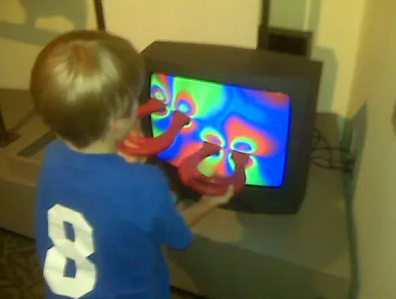The redundant question, “a shader that looks like an original tv”, you know that each brand looks different and each model of the same brand looks different. A Phillips slotmask TV looks different from an LG slotmask, and an LG aperture looks different from a Sony Trinitron aperture.
Here in the forum there are threads dedicated to seeing what a physical CRT looks like, I’m sure most people who do shader compare it to a physical CRT.
A footnote:
NTSC is a standard that defines frequency, color, size, audio ratio and other things. Content produced with that standard looks perfect. What produces the distortion is the CRT.
I don’t recall seeing plotting pronounced until the advent of PSX + TV Trinitron.
The monitors incorporated the ‘vertical sync’ function and it swept the screening, also the mask disappears, well adjusted it looks awesome, I have seen something similar in some shaders, tvout-jinc has it and…
Gentleman @kokoko3k , your monitor shaders need this 

And the arcades looked horrible, cheap monitors, they were constantly misaligned and damaged. Maybe that’s what people are looking for, how ugly the TV’s looked, blurred, darkened all or one corner, opaque or rolled colors, signal failure.
this is a recurring theme and I’ve even read, “that it looks original as it did in the magazine”. 
But let’s not lose the ability to be surprised. No one has asked for a shader with a magnetized screen. 



















